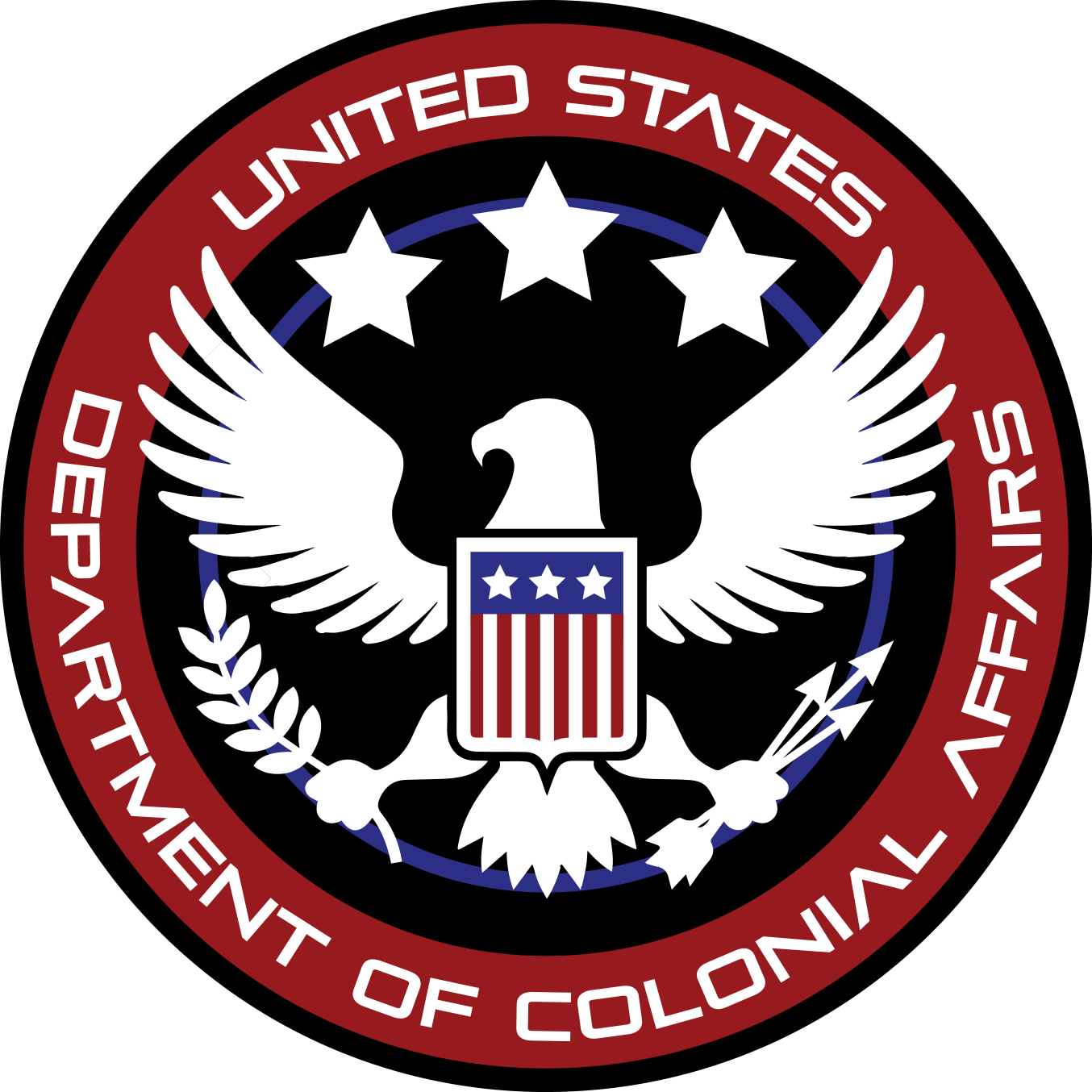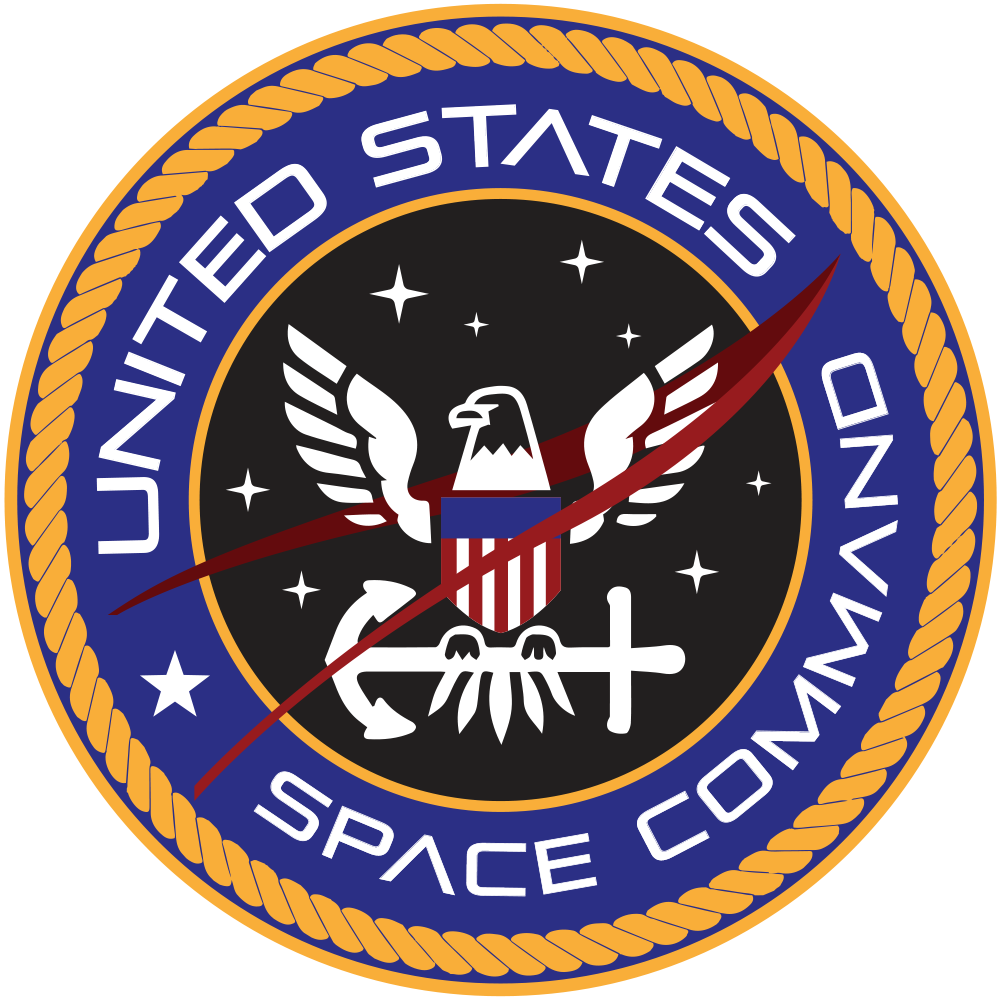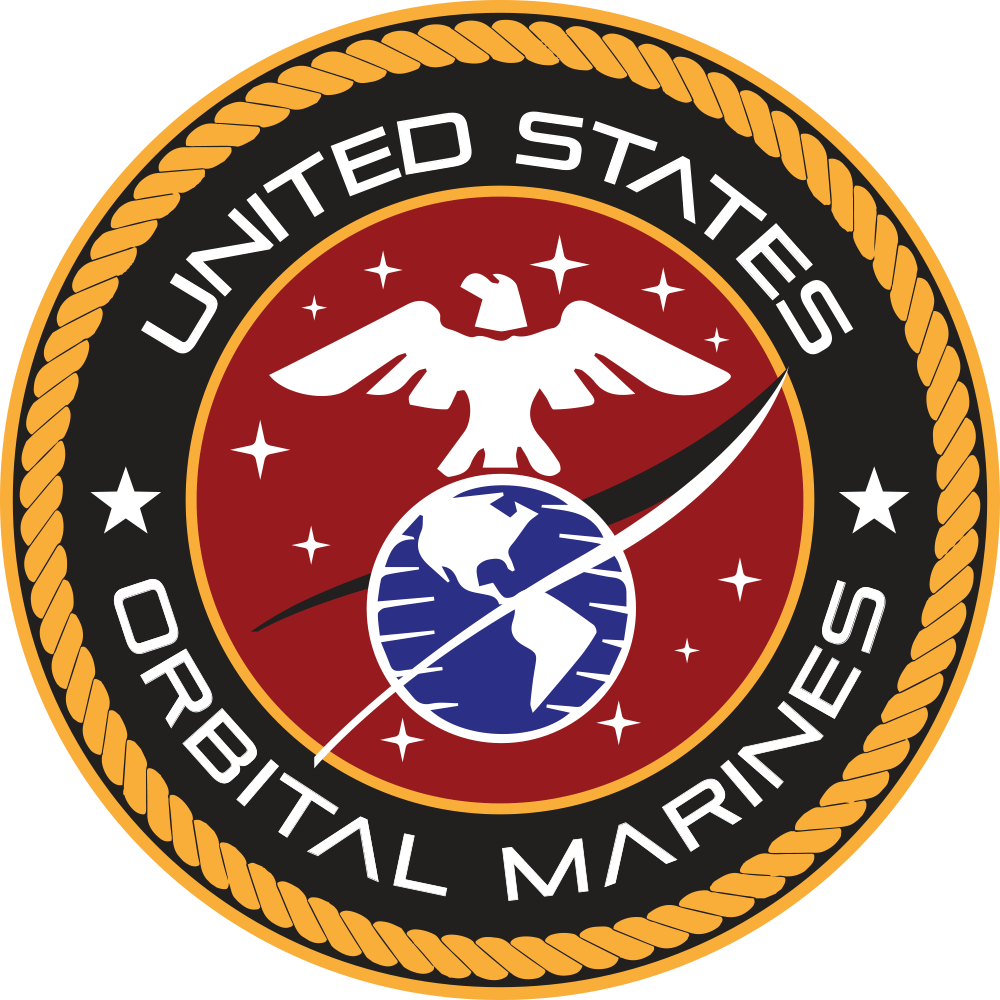Factions of the Sol System, 2219
MAJOR ORGANIZATIONS

THE DEPARTMENT OF COLONIAL AFFAIRS (DCA)
Though US colonial efforts reach far back into the country’s early history, the Department of Colonial Affairs (DCA) represents America’s more modern efforts to colonize throughout the Sol System. Forged under Lucille Álvarez-King’s first presidential term, the department helped to establish the American Lunar Colony into a thriving success. In later decades, similar efforts were made by the department to establish the colonies on Titan and Enceladus, though environmental setbacks and sheer distance from earth yielded far less viable results. In each case, Colonial Affairs has spearheaded efforts to not only engineer and establish the colony physically, but to ensure its social and political strength as well.
US colonies always involve the installation of a colonial governor, an individual selected by the US president and confirmed via a Senate hearing. While US colonies are also intended to establish a representative legislative body, only Enceladus maintains this institution with any validity. It was the Department of Colonial Affairs – alongside heavy influence from Windfall Starship Systems – that guided the efforts of the Outbound Discovery Mission, with former congressman William Edwards serving as governor of the ultimately disastrous voyage.
While Colonial Affairs has once again been asked to champion the Outbound Hope Mission, tension between the DCA and the USSC has been obvious. Though the military-focused USSC has participated in colonial operations in the past, the political ramifications of the Outbound Hope operation has prompted more than a few clashes of interest with Colonial Affairs.

THE UNITED STATES SPACE COMMAND (USSC)
Founded in the second decade of the 21st century, the United States Space Command (USSC) garnered little authority or prestige until the Great American Revival over a century later. With the return of the United States as a major military power, the USSC took its role as the most influential branch of the US armed services and ensured US victories in the Second Orbital War and the Solar War. Tasked with protecting US interests and helping to colonize a number of worlds, including Luna, Titan, and Enceladus, the USSC is a powerful stellar navy. It serves as both brain and brawn of the United States’ efforts in known space — and beyond.

THE ANTI-COLONIAL ALLIANCE
The Anti-Colonial Alliance (ACA) is a loose and unorganized collection of activists, politicians, intellectuals, zealots, and freedom fighters intent on curbing humanity’s progression into the stars. First materializing in the 2140’s, the ACA is a confederation of dozens of other organizations, each with its own means of resistance and agenda. Though some protest poor colonial conditions or the widening disparity of wealth colonization has prompted on Earth, the vast majority of Anti-Colonialists are motivated by either environmental concerns or religious devotion.
While attempts to unite the various factions have developed into noteworthy congresses and coalitions, nearly all have ended in frustration. Despite their differences and muddled histories, most Anti-Colonialists have at least some degree of respect for each other, knowing that political and public support is decidedly turned against them as humanity continues to explore.

The Blue Party
A major political faction within the Western European Alliance, the Blue Party (Le Parti Bleu) is a staunch supporter of the anti-colonial movement, arguing that humanity is better served in allocating resources toward the restoration of Earth and the support of its inhabitants. Though not supportive of violence directly, the group has often associated with more extreme factions of the anti-colonial movement, making it difficult for other parties to trust them.

The Guardians of the Gates of Heaven
The Guardians of the Gates of Heaven were founded by Tobias Reynolds, a self-declared prophet who wove together a collection of traditions from the Abrahamic faiths and focused them on the idea of the Bifröst Station as a portal to the heavenly realms. Reynolds drew significant support in the early 2160’s and peaked after the loss of the Outbound Discovery fleet in 2069. A concerted effort by the USSC to the eliminate the group proved successful soon after. Continued supporters fled into obscurity, ultimately being wiped out after a final failed strike on the Bifröst Station in 2205.

THE OUTBOUND DISCOVERY FLEET
Shortly after the Solar War and the US liberation of the Bifröst Station, the United USSC began a sizeable effort to probe the station’s capability to transport objects thousands of light years. After several brief and unmanned missions, the USSC was pleased to announce that the Station led to a star system much like our own — and with at least one world of nearly identical atmospheric content.
Anxious to begin settling the new and seemingly-empty planet, the USSC launched the Outbound Discovery mission in 2169. With a fleet of nearly 20,000 colonists, the Discovery set out with the intent of establishing mankind’s first interstellar colony.
Yet such ambitions were quickly extinguished when the fleet itself disappeared beyond the Bifröst. The USSC sent several scout ships in an attempt to learn more, but each returned empty-handed. As weeks of waiting grew into years and decades, the truth became apparent: The Outbound Discovery fleet had been lost.

THE OUTBOUND HOPE FLEET
Following the loss of the Outbound Discovery Fleet, the Bifröst Station and its use became a matter of interplanetary debate and conflict. When the USSC regained control of the station in the first decade of the 23rd century, it was widely argued that the Outbound program needed to be rekindled.
Preparing to launch another civilian fleet through the Station in 2219, the USSC attempted to curb another disaster by escorting the fleet with a sizeable military escort. Though official reports continued to blame natural forces for Discovery’s demise, the addition of military ships pleased both high command and the generic public. Now spearheaded by the USSC Ascendant Dawn, the Outbound Hope Fleet looks to once more plunge beyond the Relay in the hopes of new beginnings. If successful, nearly 30,000 colonists will be the first of humanity to settle beyond the known solar system.

THE UNITED STATES ORBITAL MARINES (USOM)
The United States Orbital Marines are a pivotal branch of the United States Space Command that materialized in the years before the Second Orbital War. Battle-hardened and well-equipped, orbital marines are key to US success in conflicts both in space and in colonies around the Sol System.
Able to board hostile starships, subdue enemy space stations, or launch all-out planetary invasions, the USOM is a force to be reckoned with. Widely regarded as some of the best warriors of the modern age, the orbital marines have come to rely heavily on state-of-the -art weapons, armors, and tactics. One of the most feared – and most recent – tools in the USOM arsenal is the OMEGA-II Armor System, a mechanized combat suit that greatly increases a marine’s strength and resilience on the battlefield. Integrated to the wearer via a set of implanted neural nodes, a single Omega Assault Trooper can change the course of battle.
MAJOR STATES

UNITED STATES OF AMERICA AND STELLAR COLONIES
Originally founded in the late 18th century, The United States is no stranger to both hardship and profound success. Through periods of significant expansion and growth, isolation and influence, third-world status and indisputable power, the United States has endured for the last four and half centuries.
While blossoming as a superpower in the wake of the Second World War, the United States began a significant period of decline following the Partisan Wars, the second of the nation’s Civil Wars and arguably the most detrimental. Its fortunes reversed again a century later with the launch of Windfall Starship Systems and the rekindling of the American industrial machine. Since then, the United States has played a massive role in international and interplanetary affairs, quickly resuming the mantle of superpower once more.
Such influence is undoubtedly the role of the Windfall Corporation, which serves as the most notable corporation in the country. While many lament the influence Windfall holds, others see it as the key to US success at home and abroad.
In 2176 — the nation’s four-hundredth birthday — the United States was reorganized as the United States of America and Stellar Colonies (USASC) in a sweeping series of political reforms. These changes redrew the state and regional boundaries of US holdings on earth and offered new congressional representation to the growing nation’s many extraterrestrial colonies.
EXTRATERRESTRIAL CLAIMS

THE MARTIAN COLLECTIVE
Born in the chaos of the 2030’s, the Martian Collective began as a humble scientific venture financed my many of the world’s economic elite. The first human settlement on Mars, the Collective quickly became an intellectual utopia, drawing intense interest from academics and innovators from Earth. By 2050, the colony had become home to more than 10,000 settlers, with thousands more in the years to come.
After the First Orbital War, the Collective began to assert itself as a major political, military, and industrial power, relying heavily on its innovative spirit and widespread robotic automation. Dozens of medical, military, and domestic innovations materialized from Martian labs, helping to modernize life both on Earth and among the star system’s increasing number of colonies. After the defeat of the Martian Fleet in the Second Orbital War, The Collective opted to curb its future military efforts, re-concentrating on scientific ventures.
While The Collective played no part in the original Outbound Discovery venture, the USSC opted to partner with the Martians in the hopes of securing a more favorable result for the Outbound Hope Mission.
EXTRATERRESTRIAL CLAIMS

THE PEOPLE’S EMPIRE OF CHINA
A descendants of a civilization that dates back thousands of years, the Chinese Empire was collapsed into a temporary republic in 1912, only to be replaced by a communist state in 1949. Despite modernizations and adjustments, the communist state endured for more than a century and a half before it was finally collapsed in favor of its current imperial system in 2112.
Backed by traditionalists who cited the failures of the First Orbital War and the US collapse to democratic infighting nearly a century before, the new system embraced autocracy and many elements of its previous command economy but maintained a well-regulated elected legislature. A new imperial Huateng dynasty acted as the supreme executive head while the legislature maintained the essential bureaucratic functions of government. The new government was meant to induce “traditional values to a modern state,” and — despite detractors — proved itself to be surprisingly efficient and effective.
As China’s military modernized and expanded throughout the Sol system, the new emperors maintained a powerful grip on their Empire’s international influence. The establishment of the Jinxing Platform over Venus gave the young empire a much-needed boon, though the Xing Colony over Ganymede had only moderate success. Though many feared a backlash against the emperor after the defeat in the Solar War, state media quickly spun the loss to blame Windfall and its use of dangerous and illegal technologies.
EXTRATERRESTRIAL CLAIMS

THE RUSSIAN FEDERATION
Born from the collapse of the Soviet Union in the late 20th century, the Russian Federation struggled to gain its footing in the post-Cold War world. For much of the early 21st century, the country struggled with autocratic leaders but maintained its influence by sponsoring proxy wars and fostering dissent amongst its opponents.
Paradoxically, as the United States collapsed into political infighting during the Partisan War, Russia finally overthrew its autocratic leaders in favor of a new government that favored both democracy and western values. Though this transition was by no means seamless, it allowed the Russian state to maintain a strong presence on the global stage for decades to come.
The Russian participation in the First Orbital War proved disastrous, however. Though ultimately victorious, Chinese forces all but wiped out Russia’s fighting capacity and devastated its urban centers, forcing them into a multi-decade period of isolation thereafter.
Russian dominance was reborn with the establishment of the mineral extraction colony on Ceres in 2152. The outpost proved wildly profitable, causing the station and its population to expand rapidly over the coming decade. by the discovery of Bifröst Station, Ceres station had grown into a powerful bastion of Russian economic and military might. When the Solar War broke out in 2160, Russia would prove itself to be a formidable ally to its age-old rival, the United States.
EXTRATERRESTRIAL CLAIMS

THE WESTERN EUROPEAN ALLIANCE (WEA)
As the United States collapsed into chaos during the Partisan War, many western states began to fear for the worst. Believing safety could be found in unity, The European Union began to reinvigorate itself as a more interdependent and sovereign system modeled on a new, federal government. In 2036, voters in The United Kingdom — absent from the European Union since 2020 — elected to rejoin the fold, rebranding the new superstate as the Western European Alliance.
Europe joined the push toward space militarization with its construction of the Primus Armada in the early days of the First Orbital War. Though its ships were by no means technological exemplars, the armada itself served as a new template for the organization of stellar fleets moving forward. While the WEA would never assume the mantle of superpower, its dedication to a firm presence in space helped to solidify Europe’s prominent role in international and interplanetary affairs for the next century and a half.
Unlike their competitors, European leaders placed a strong emphasis on research and discovery over outright colonialism. Though the WEA did establish important and sizeable colonies, these generally favored scientific endeavors over establishing a military presence. It was a European ship — the Éclaireur — that first discovered the Bifröst Station. That achievement was quickly undermined as US interests seized hold of the station, prompting a half century of animosity between Europe and the United States that peaked during the violence of the Solar War. Though tempers have since cooled, attitudes between the WEA and USASC are generally neutral at best.
EXTRATERRESTRIAL CLAIMS
MAJOR CORPORATIONS

WINDFALL STARSHIP SYSTEMS, INC.
In 2124, Lucille Álvarez-King, a budding American engineer, perfected the revolutionary Advanced Ion Engine (AIE). Unsurpassed in its ability to propel spacecraft, the AIE promised to reinvent the very idea of space travel. Teaming with renown Japanese starship engineer Takahashi Asuka, Álvarez-King launched Windfall Starship Systems Corporation the following year.
Within a decade, the company’s overwhelming success had surpassed all of its rivals, led to dozens of essential starship technologies and ultimately reasserted American economic prowess. Both the establishment of an American Orbital Fleet and Álvarez-King’s ascension to the US presidency helped to cement the company’s longevity in the years to come. By the turn of the 23rd century, Windfall was the largest corporation in the world, with deep political control within several major countries and colonies.
Though its sizeable powera and rumors of widespread corruption worry many, few can deny Windfall’s remarkable service in helping to reinvent humanity among the stars.









